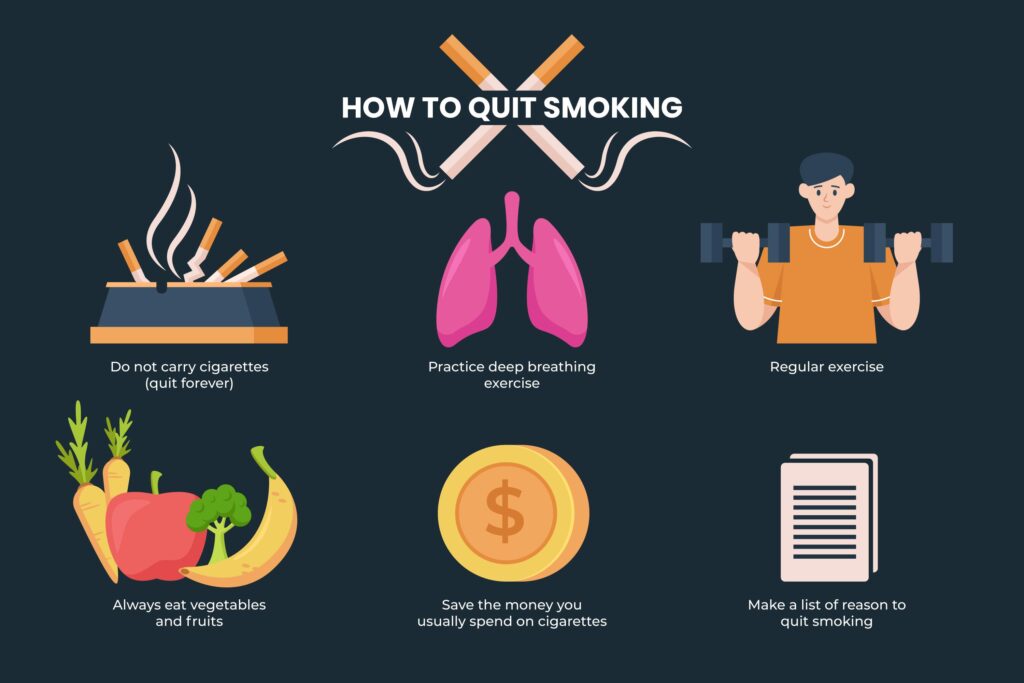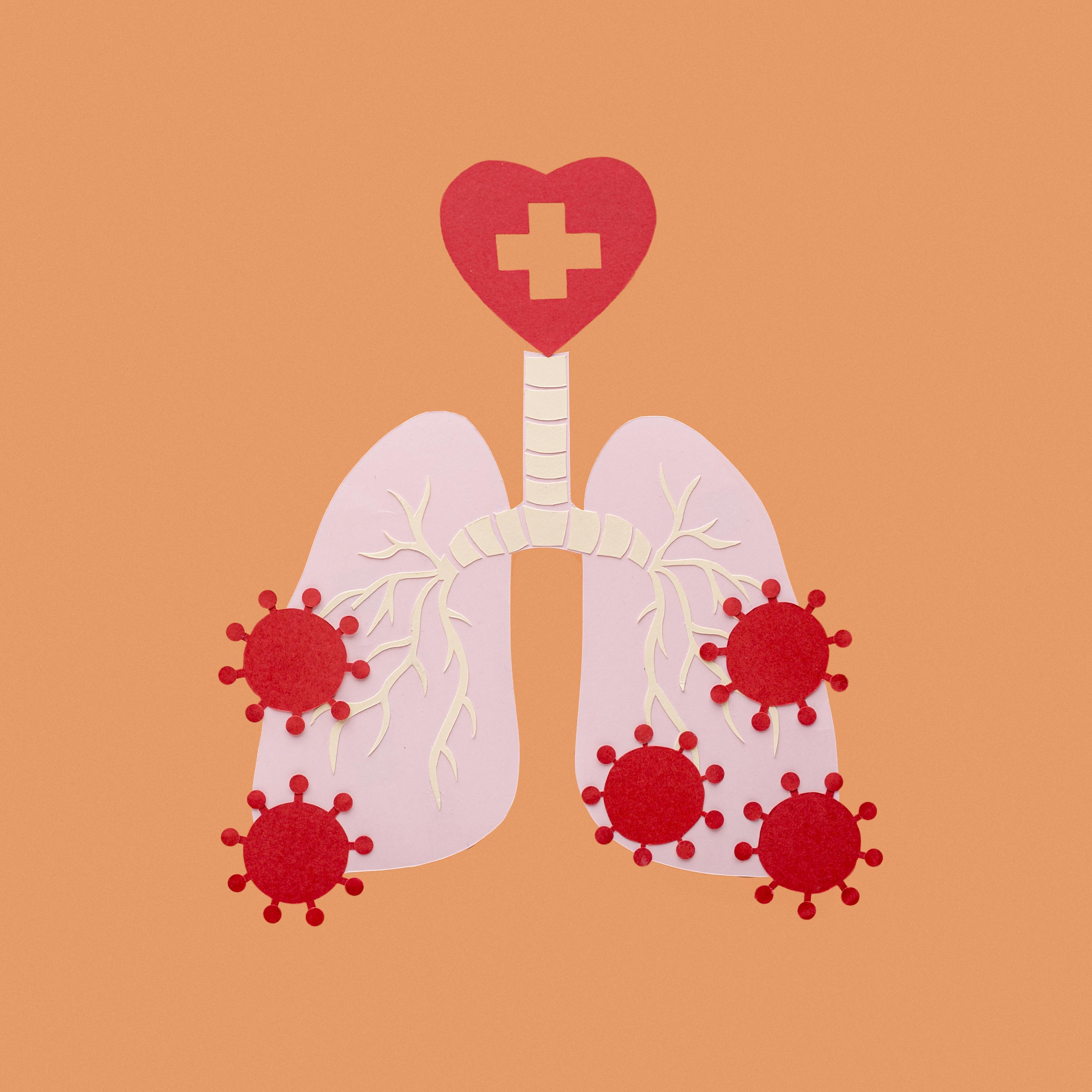How does smoking cause lung diseases ?
Smoking causes problems in the lungs that prevent lungs from working properly. There are three main types of lung diseases: Airway diseases, Lung cancer & COPD.
These diseases affect the tubes (airways) that carry oxygen and other gases into and out of the lungs.
Smoking can cause lung disease by damaging your airways and the small air sacs (alveoli) found in your lungs. Lung diseases caused by smoking include COPD, which includes emphysema and chronic bronchitis. Cigarette smoking causes most cases of lung cancer.

Disadvantages Of Smoking
1 Airway diseases
These diseases affect the tubes (airways) that carry oxygen and other gases into and out of the lungs. They usually cause a narrowing or blockage of the airways. Airway diseases include asthma, chronic obstructive pulmonary disease (COPD), bronchiolitis, and bronchiectasis (which also is the main disorder for persons with cystic fibrosis). People with airway diseases often say they feel as if they’re “trying to breathe out through a straw.”
2 Lung Cancer:
Lung cancer happens when cells in the lung change (or mutate). Most often, this is because of exposure to dangerous chemicals that we breathe. But lung cancer can also happen in people with no known exposure to toxic substances. Unlike normal cells, cancer cells grow uncontrollably and cluster together to form a tumor, destroying healthy lung tissue around them. Symptoms usually do not appear until cancer cells spread to other parts of the body and prevent other organs from functioning properly. At this point, it is harder to treat lung cancer.
Smoking is the leading cause of lung cancer. Carcinogens in tobacco smoke initiate the development of malignant cells in the lungs. The risk of lung cancer is significantly higher in smokers compared to non-smokers, and the duration and intensity of smoking are directly correlated with increased cancer risk.
- Chronic Obstructive Pulmonary Disease (COPD):
Smoking is the primary cause of COPD, a progressive lung disease encompassing chronic bronchitis and emphysema. Chronic bronchitis involves inflammation of the airways, leading to coughing and excess mucus production, while emphysema involves damage to the air sacs, resulting in difficulty exhaling air. Both conditions are closely linked to long-term smoking.
- Inflammation and Tissue Damage:
The chemicals in cigarette smoke trigger inflammation in the lungs. Chronic exposure to these irritants leads to persistent inflammation, damaging the delicate lung tissues. Over time, this chronic inflammation contributes to the development of conditions like chronic bronchitis and emphysema.
- Tar Deposition and Mucus Buildup:
Tar, a sticky substance in cigarette smoke, gets deposited in the lungs. Over time, it accumulates in the airways, leading to the formation of sticky mucus. This buildup impairs the natural cleaning mechanisms of the respiratory system, trapping harmful particles and promoting the growth of bacteria, contributing to chronic bronchitis and other respiratory issues.
- Weakening of Immune Defences:
Smoking weakens the immune system in the respiratory tract, making smokers more susceptible to respiratory infections. Impaired immune defences increase the likelihood of developing conditions like pneumonia and bronchitis.
- Reduced Lung Function:
The toxic components of cigarette smoke cause a gradual decline in lung function. This reduction is evident in decreased lung capacity and increased difficulty in breathing. Over time, the impairment becomes more pronounced, contributing to the overall deterioration of respiratory health.


What Are the Types of Lung Cancer Treatment ?
Lung cancer treatment decisions are made by you and your care team together. All lung cancer treatment options have potential risks and benefits. Your options are based on what type of cancer you have, your stage of the disease and your lung cancer treatment goals.
Key Points
- Your lung cancer treatment options are determined by your lung cancer type, lung cancer stage, and lung cancer treatment goals.
- You may receive several different types of treatment for lung cancer.
- You and your care team make decisions about lung cancer treatment together.
- Each lung cancer treatment option has potential side effects, which usually can be manage
Conclusion:
In conclusion, while the association between smoking and lung disease is well established, many of the harmful substances in cigarette smoke contribute to respiratory damage. Understanding these mechanisms underlines the importance of promoting smoking cessation to preserve and improve lung health. It’s never too late to quit smoking and adopt a healthy, lung-friendly lifestyle.
The most common respiratory diseases are asthma, chronic obstructive pulmonary disease, cystic fibrosis, lung cancer, tuberculosis, bronchitis, and pneumonia.
Chronic lower respiratory diseases are a set of conditions that include chronic obstructive pulmonary disease (COPD), emphysema, and chronic bronchitis. Together, chronic lower respiratory diseases are a leading cause of death in the United States.
- Asthma.
- COPD.
- COVID-19.
- Lung Cancer.
- Pneumonia.
Type 1 respiratory failure occurs when the respiratory system cannot adequately provide oxygen to the body, leading to hypoxemia.
Type 2 respiratory failure occurs when the respiratory system cannot sufficiently remove carbon dioxide from the body, leading to hypercapnia.





